Botox Injections in Spain
Search and Compare the Best Clinics and Doctors at the Lowest Prices for Botox Injections in Spain

Find the best clinics for Botox Injections in Spain
No pricing info available
Indonesia offers the best prices Worldwide
Price: $ 5
From 30 verified reviews
Mariajose, 23 September 2020
Mi experiencia está siendo muy buena muy buen trato y muy profesionales volvere sin duda
Clinica Nelida Grande, can be found in Carrer del Dr Roux, Barcelona, Spain and offers its patients Botox Injections procedures as well as 24 other procedures, across 2 different procedure categories. At present, there is no pricing information for Botox Injections procedures at Clinica Nelida Grande. The pricing information is quite specialised, so it's only available on request. The lead specialist at the Clinic will be carrying out all the treatments, and Clinica Nelida Grande is not accredited by any recognised accreditations institutions.
- Home
- Spain
Compare Before & After Photos of _procedure_photos.phpBotox Injections
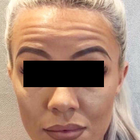
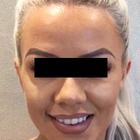
Front view


Half-side view
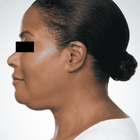

Full-side view


Front view


Half-side view
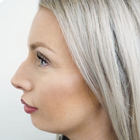

Full-side view


Front view
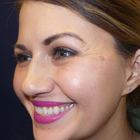

Half-side view
WHY US?
At Medijump, we're making medical easy. You can search, compare, discuss, and book your medical all in one place. We open the door to the best medical providers worldwide, saving you time and energy along the way, and it's all for FREE, no hidden fees, and no price markups guaranteed. So what are you waiting for?

Free

Best Price

Widest Selection

Risk-Free
What you need to know about Botox Injections in Spain

In order to gain an all-encompassing understanding of Botox Injections in Spain, conducting thorough research before scheduling a procedure is vital. Botox Injections is commonly pursued to achieve youthful benefits by utilizing a purified form of botulinum toxin to relax facial muscles, effectively diminishing wrinkles, fine lines, and age-related creases.
Although generally safe, the procedure might lead to temporary bruising or slight sagging of the eyelid or eyebrow. However, these minor risks can be avoided by consulting a skilled and reputable professional in Spain. To access more in-depth information on the procedure, turn to reputable health resources like WebMD for extensive insights.
What is the cost of Botox Injections in Spain?
The price of a Botox Injections in Spain depends on several aspects, such as the particular clinic, the practitioner's expertise, and the size of the treatment area. As a result, there might be a considerable difference in costs. Nevertheless, prioritizing a high-quality procedure guarantees minimal risks and excellent outcomes; hence, it is vital for patients to obtain several price estimates to determine a reasonable value.
What does a Botox Injections Procedure Involve?
A Botox Injections entails administering a small quantity of botulinum toxin into select muscles underneath the skin. This results in the targeted muscles becoming relaxed, consequently reducing the visibility of wrinkles and fine lines.
Generally, the entire procedure takes approximately 15 to 30 minutes, contingent on the area being treated. Patients may experience mild discomfort, similar to a gentle pinch, during the process. Comprehensive information about the procedure specifics can be found at the Mayo Clinic.
How Long Should I Stay in Spain for a Botox Injections Procedure?
The Botox Injections does not necessitate any recovery time, and most individuals can continue with their regular routines without interruption post-treatment. However, it's generally advised to remain in Spain for a few days following the procedure to relax and let nominally common side effects like swelling or bruising dissipate. A follow-up consultation with the healthcare provider can be beneficial to examine the outcome and carry out any required alterations.
In Spain, there's an abundance of renowned clinics conducting Botox Injections. These establishments not only render excellent care but also accommodate a tranquil environment where an individual can comfortably rest before journeying home. An extended stay of a few days enables the patient to enjoy rest and explore the facilities and tourist spots Spain purveys, making their medical trip more pleasurable.
What's the Recovery Time for Botox Injections Procedures in Spain?
Among the primary advantages of Botox Injections is its swift recuperation period. More often than not, you can carry on with your daily tasks post-procedure, earning it a favorite for "lunchtime" appointments. Still, steering clear of demanding physical activities for 24 hours after the procedure is advised. Mild swelling, bruising, or redness at the injection site are usual side effects but typically dissipate within a few hours or days. It is important to abide by the post-care directions provided by the clinic to expedite recovery and amplify the outcome.
What sort of Aftercare is Required for Botox Injections Procedures in Spain?
After a Botox Injections procedure, you will be able to return to your normal activities immediately. However, your provider may advise you to avoid strenuous activities, exposure to strong sunlight, and consuming alcohol for a certain period. This is to ensure that the injected protein does not spread to other areas and only affects the intended muscles.
Patients are advised to avoid lying down or leaning forward for four hours after the treatment, as this could cause the Botox Injections to spread to other areas of the face, causing unwanted effects. It's also recommended to avoid massaging or rubbing the treated area for 24 hours. Insights from Mayo Clinic show that any mild discomfort, swelling, or bruising at the injection site should resolve on its own within a few days.
What's the Success Rate of Botox Injections Procedures in Spain?
Botox Injections has garnered international acclaim for its high efficacy, including in Spain. When administered by proficient experts, numerous patients witness discernible enhancements in the treated regions, commonly resulting in elevated self-esteem and improved physical appeal. However, akin to every medical procedure, the precise success rate can fluctuate depending on individual response, the competence of the practitioner, and the distinct purpose of the treatment. It is recommended to set realistic expectations and grasp that while Botox Injections yields substantial results, it does not indefinitely eliminate all aging symptoms.
Are there Alternatives to Botox Injections Procedures in Spain?
While Botox Injections has become a popular choice for reducing facial lines and wrinkles due to its effectiveness and minimal downtime, it's not the only option. There are several alternatives to consider if you're not sure if Botox Injections is right for you. For example, dermal fillers can also significantly reduce the appearance of wrinkles and add volume to the face.
Laser treatments, chemical peels, and microdermabrasion are other options that can rejuvenate your skin and enhance your appearance. However, as every person is unique, it's best to discuss with your healthcare provider to determine the most suitable treatment for your specific concerns and needs.
What Should You Expect Before and After the Procedure.
Before proceeding with Botox Injections, a preliminary consultation is necessary to evaluate your appropriateness for the treatment and to align your expectations. You should be in general good health and not carrying a baby or nursing. Your provider will review your medical history, and may suggest you cease taking certain medications a few days prior to undertaking the treatment.
Post-procedure, a temporary bruise or mild headache might occur, generally alleviating after a few hours. Your specialist will furnish you with post-treatment guidelines, which commonly advise avoiding rigorous activities and exposure to heat for the first 24 hours after treatment. The entire impact of the treatment will be apparent after approximately two weeks. Routine follow-up consultations are needed to preserve the results since the effects of Botox Injections are fleeting, generally lasting between three to six months.
How safe is Botox Injections?
Botox Injections boasts a considerable history of secure utilization in the aesthetic industry, and has been the subject of extensive research, distinguishing it as one of the most comprehensively examined cosmetic medical procedures. Minor side effects like bruising, swelling, or redness are typical, but they usually subside within a few days. More severe side effects including allergic reactions or muscular weakness are infrequent. To reduce the risk of complications, always ensure your Botox Injections is carried out by a qualified and accredited professional.
Does Botox Injections have long-term effects?
The effects of Botox Injections are mostly of a transient nature, with the majority of individuals seeing the smoothening result last around three to six months. That said, with periodic and steady treatments, some patients might observe a long-term enhancement in their lines and wrinkles as the targeted muscles adapt to relaxation. Persistent treatments of Botox Injections can educate facial muscles to contract less, thereby diminishing wrinkle visibility over time.
Though Botox Injections isn't a remedy for the root causes of these lines and doesn't halt the aging process, its regular application can considerably decelerate the visible aging signs. Always engage in a consultation with your healthcare provider for personalized guidance.
Whilst the information presented here has been accurately sourced and verified by a medical professional for its accuracy, it is still advised to consult with your doctor before pursuing a medical treatment at one of the listed medical providers
No Time?
Tell us what you're looking for and we'll reachout to the top clinics all at once
Enquire Now

Popular Procedures in Spain
Prices Start From $111

Prices Start From $16

Prices Start From $220

Prices Start From $74

Prices Start From $340

Prices Start From $101

Prices Start From $53

Prices Start From $278

Recommended Medical Centers in Spain for Botox Injections

- Interpreter services
- Translation service
- Religious facilities
- Medical records transfer
- Medical travel insurance
- Health insurance coordination
- TV in the room
- Safe in the room
- Phone in the room
- Private rooms for patients available

- Interpreter services
- Translation service
- Religious facilities
- Medical records transfer
- Medical travel insurance
- Health insurance coordination
- TV in the room
- Safe in the room
- Phone in the room
- Private rooms for patients available

- Interpreter services
- Translation service
- Religious facilities
- Medical records transfer
- Medical travel insurance
- Health insurance coordination
- TV in the room
- Safe in the room
- Phone in the room
- Private rooms for patients available

- Interpreter services
- Translation service
- Religious facilities
- Medical records transfer
- Medical travel insurance
- Health insurance coordination
- TV in the room
- Safe in the room
- Phone in the room
- Private rooms for patients available

- Interpreter services
- Translation service
- Religious facilities
- Medical records transfer
- Medical travel insurance
- Health insurance coordination
- TV in the room
- Safe in the room
- Phone in the room
- Private rooms for patients available

- Interpreter services
- Translation service
- Religious facilities
- Medical records transfer
- Medical travel insurance
- Health insurance coordination
- TV in the room
- Safe in the room
- Phone in the room
- Private rooms for patients available

- Interpreter services
- Translation service
- Religious facilities
- Medical records transfer
- Medical travel insurance
- Health insurance coordination
- TV in the room
- Safe in the room
- Phone in the room
- Private rooms for patients available

- Interpreter services
- Translation service
- Religious facilities
- Medical records transfer
- Medical travel insurance
- Health insurance coordination
- TV in the room
- Safe in the room
- Phone in the room
- Private rooms for patients available

- Interpreter services
- Translation service
- Religious facilities
- Medical records transfer
- Medical travel insurance
- Health insurance coordination
- TV in the room
- Safe in the room
- Phone in the room
- Private rooms for patients available

- Interpreter services
- Translation service
- Religious facilities
- Medical records transfer
- Medical travel insurance
- Health insurance coordination
- TV in the room
- Safe in the room
- Phone in the room
- Private rooms for patients available
Botox Injections in and around Spain
About Spain
Historic Spain is home to the third-highest number of UNESCO World Heritage Sites, after Italy and China. Part of the Iberian Peninsula, along with Portugal, Spain also shares borders with France and the less well-known, Andorra. The country itself is made up of several regions, both on the mainland and out at sea, with the Canary Islands closer to Morocco than Spain - they are located in the Atlantic Ocean, whilst the Balearic Islands are a little closer to home, in the Mediterranean Sea. On the mainland there is Central Spain, home to the capital, Madrid, Catalonia in the East, home to the second city, Barcelona, and the Basque Country in the North, to name but a few.
Spain sees an estimated 100,000 medical tourists each year, many of which travel for Botox Injections procedures. The biggest target market is from the UK, accounting for one in four of Spain's 60m annual tourists. An excellent healthcare system combined with warm temperatures and competitive prices means that Spain is now one of the more popular destinations in Europe for medical tourism. The most popular procedures tend to be cosmetic surgery, fertility treatments, bariatric surgery, cardiac surgery, orthopedics, urology, and bone marrow transplants.
Popular Parts of Spain
Spain has diverse landscapes, dynamic cities, influential art, and delightful food.
- Madrid is the capital of Spain. Modern infrastructure and historic neighborhoods blend nicely in the city. Known for its glorious fashion, food, and nightlife, the city has a lively spirit. Rest in El Retiro Park under the sun or take a guided tour in Palacio Real. Tourists who love sports can watch a Real Madrid soccer match.
- Barcelona has a plethora of attractive architecture, unique food beautiful beaches, and a vibrant nightlife. It is the most popular tourist destinations in the country. Visit Picasso Museum, Enjoy Gaudi’s Architecture the church of the Sagrada Família, or visit the Barcelona History Museum and enjoy the beach.
- Valencia is Spain’s third-largest city. The city is filled with an array of art nouveau buildings as well as Gothic and Renaissance monuments. Try all the food that the city offers, especially the famous paella. Be inspired by the stunning Cuidad de las Artes y las Ciencias, a massive building in the old Turia riverbed.
- Palma de Mallorca is a very welcoming city for international tourists. It has a number of historical attractions, Gothic churches, and the beautiful Mediterranean Sea at its feet. Shopping and gastronomic scenes are two of the best things in the city. Tourists can relax in the seafront cafés after a long day.
- Seville is a stunning artistic, cultural, and financial capital of southern Spain. Being a big university town, it has a very youthful vibe everywhere. Spend a day exploring Parque de Maria Luisa, tour Casa de Pilatos, get lost in the maze of Jewish Quarter’s small streets, and discover what the town has to offer on a bike.
- Ibiza is known to have some of the best nightclubs in the world. It is a beautiful island with dozens of amazing things to discover.
Weather and Climate in Spain
Spain has wonderful weather all year-round. Summer starts from June to August and tends to be nice. Tourists can expect warm and sunny weather. The temperature can get as high as 30 °C, sometimes even higher. Summer is the peak season for tourism so prices can increase by up to 50%.
Spring (April to May) and Autumn (September to October) are great times to visit. The weather is mild and perfect to do outdoor activities, although sometimes it can be unpredictable. The country is not as crowded as during summertime.
Winter in Spain is cold but the temperature does not drop too low. The average temperature is between 4 °C to 10 °C. Northern Spain and the mountainous areas sometimes experience snowfall and rain showers.
Getting Around in Spain
The main international airport in Spain is Adolfo Suárez Madrid-Barajas and Barcelona El Prat Airport. Madrid-Barajas is the largest airport in the country. It operates domestic and international flights. The airport connects Madrid with almost every country in the world. It serves several budget airlines such as Iberia Express, Ryanair, and EasyJet. It is the hub for Air Europa and Iberia.
Barcelona El Prat Airport also serves domestic and international connections with almost every country globally. Budget airlines such as Ryanair and WestJet operate flights from this airport. It is the hub for Level and Vueling.
To get to the city center, both airports provide taxis, buses, and metro. Taxis are the most convenient transportation mode but usually more expensive. Tourists who travel to Madrid are advised to buy the Madrid Tourist Travel Pass which can be used on any Metro, bus, or suburban train for just 5 EUR.
Spain has a well-designed public transportation network. Tourists can get around Spain by train. There are high-speed (AVE) and regular service trains (Talgo) for long-distance or medium distance travel, the fares are based on a 1st and 2nd class system. For short destinations, tourists can use local trains. It offers one class of seats and makes a lot of stops. 60-year-old and older travelers can get a discount between 25 to 40 percent for train tickets. Children under the age of 13 also qualified for discounts. Buses are another excellent option. Intercity buses are affordable, clean, and safe.
Renting a car gives more flexibility for tourists. International car rental agencies are widely available in the country. The highway system is easy for foreigners to follow. Parking can be quite hard in some cities and historic towns because it can get really crowded.
Taxis have a reasonable price. Spanish taxi drivers are usually trustworthy and don’t cheat. The taxi can be hailed on the street or from a taxi stand (parade de taxi). Available taxis have green lights or signs that say “libre” on them. Taxis run on meters, but if you’re traveling a long distance, you will have to agree on the fare in advance.
Tourist Visas in Spain
Citizens of the European Union, Norway, Liechtenstein, Iceland, and Switzerland can travel to Spain with their identity cards only. Citizens of Australia, Canada, Israel, Japan, the United States, and New Zealand are granted visa-free entry and can stay for up to 90 days. Other countries can check with their nearest Spanish embassy or consulate. Spain is a member of the Schengen Convention. If you hold a Schengen visa, you cannot extend it.
Additional Information
- Local Currency: the official currency is the euro (EUR). 1 USD converts to 0.85 EUR.
- Money & Payments: ATMs are available. Tourists can withdraw money from ATMs that display the relevant symbols such as Visa and MasterCard with a charge of 1.5% to 2%. Credit and debit cards can be used for most purchases, tourists will often be asked to show a passport. Tipping is optional, tourists can leave small change or up to 5% tip in restaurants.
- Local Language: the official language is Spanish. People in major tourist cities speak good English; it is also widely spoken in coastal resorts.
- Local Culture and Religion: The largest religion in the country is Catholic Christianity with 67.5% of the population follows the religion. There are small groups of Muslims, Jews, Buddhists, Hindus, Pagans, Taoists, and Bahá'ís.
- Public Holidays: Spain celebrates Christian holidays. Known as the country of fiestas and festivals, numerous festivals such as The Holy Week, La Tomatina, and The Fallas of Valencia are hosted annually.
Popular Searches
- Plastic Surgery in Thailand
- Dental Implants in Thailand
- Hair Transplant in Thailand
- Breast Augmentation Thailand
- Gastric Sleeve in Thailand
- Gender Reassignment Surgery in Thailand
- Laser Hair Removal in Bangkok
- Botox in Bangkok
- Dermatology in Bangkok
- Breast Augmentation in Bangkok
- Coolsculpting in Bangkok
- Veneers in Turkey
- Hair Transplant in Turkey
- Rhinoplasty in Turkey
- Stem Cell Therapy in Mexico
- Rhinoplasty in Mexico
- Liposuction in Mexico
- Coolsculpting in Tijuana
- Rhinoplasty in Korea
- Scar Removal in Korea
- Gastric Sleeve in Turkey
- Bone Marrow Transplant in India
- Invisalign in Malaysia
- Plastic Surgery in the Dominican Republic
- Tummy Tuck in the Dominican Republic
- Plastic and Cosmetic Surgery in Poland
- Rhinoplasty in Poland
- Hair Implant in Poland
- Dental Implants in Poland
- IVF in Turkey

